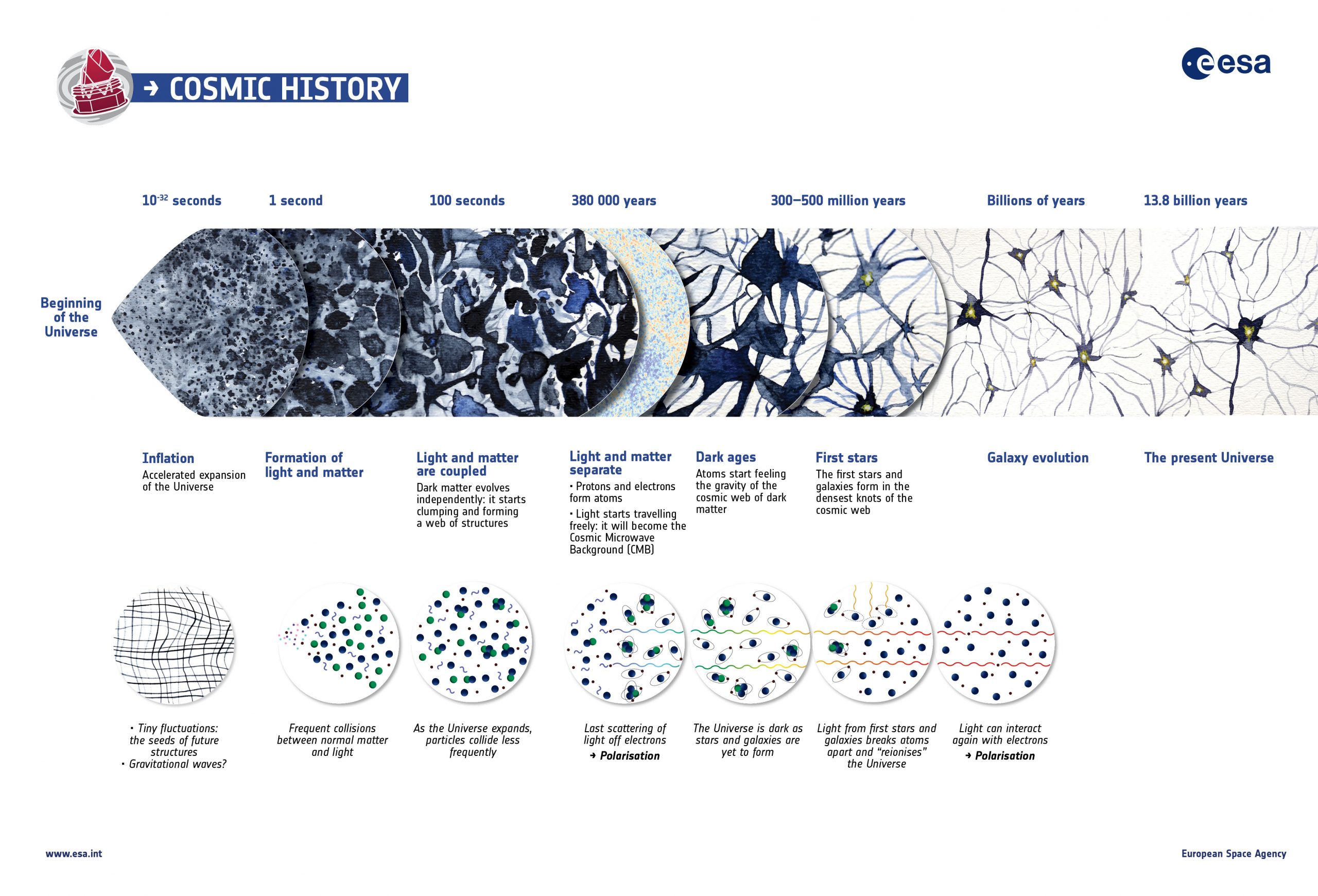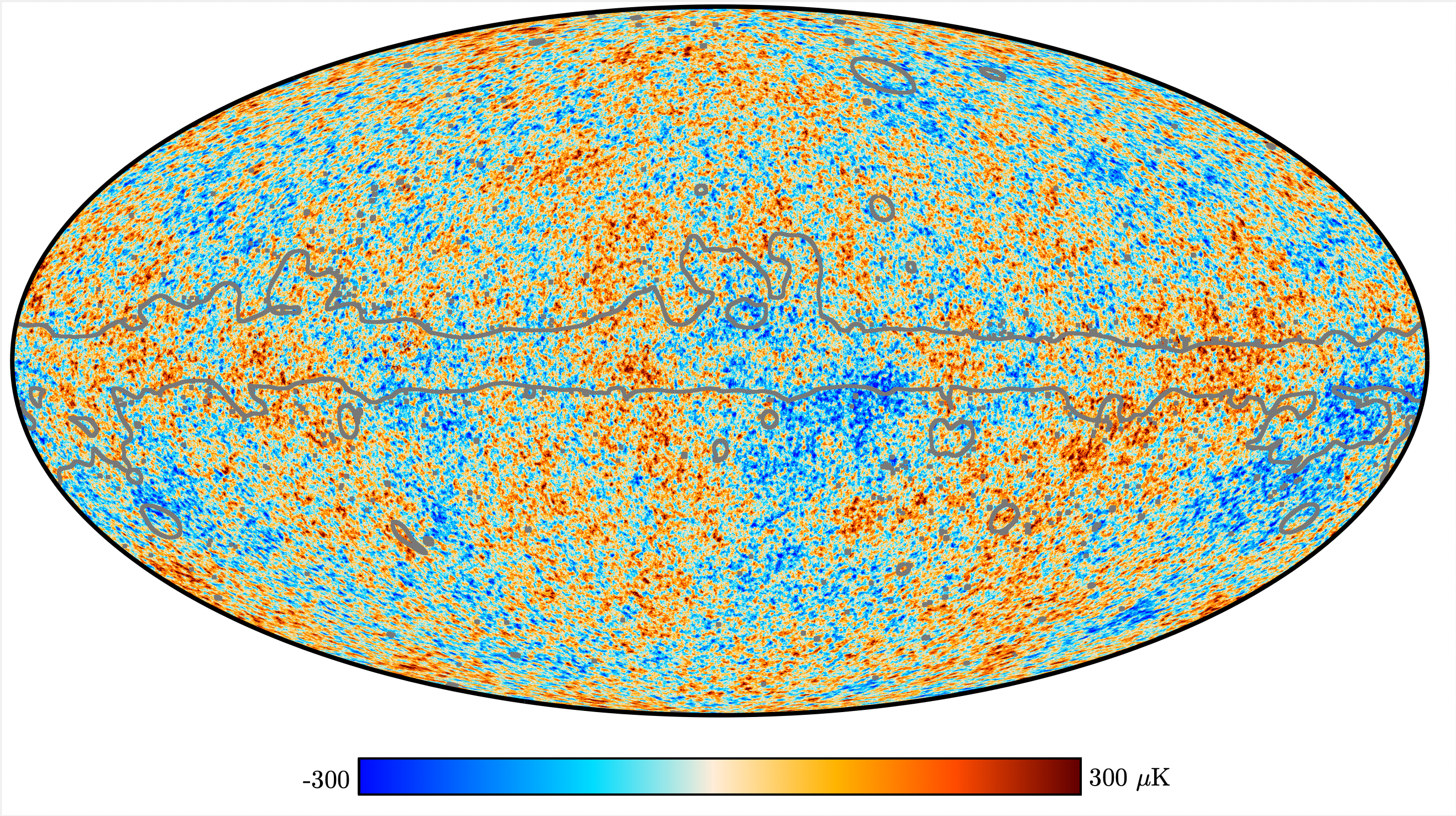Research activity:
Modern Cosmology attempts to provide science-driven answers to questions as old as
humankind. From a physical perspective, cosmology is the study of the Universe at large
scales. In other words, a cosmologist is a physicist who investigates global properties of the Universe, including its dynamics and the interaction between its basic components. A theoretical cosmologist develops dedicated physical-mathematical models to unveil and better understand such global properties.
The cosmology group at the University of Ferrara and INFN works on several complementary aspects of the research in cosmology, broadly spanning the entire evolution of the Universe as represented by the cartoon below (credit: ESA).

Our representative research area is the study of the most ancient light in the Universe, the Cosmic Microwave Background (CMB). The picture below is a map of the CMB sky. The different coloured spots are tiny fluctuations (one part over 100 thousand) of the total CMB intensity as observed by the ESA-Planck satellite. This pattern is determined by a combination of Early Universe physics, thermodynamics of the expanding Universe and evolution of the large-scale structure (galaxy clusters and cosmic voids). From the analysis of observations conducted by dedicated surveys, such as Planck, we can reconstruct the fluctuation pattern and use the CMB as a tool to investigate fundamental properties of the building blocks of the Universe.

In Ferrara, we cover a wide range of activities, from cosmo-particle projects with a mostly-theoretical flavour to the development and validation of data analysis pipelines. Our research activities can be broadly linked to the following areas (clickable links):
– Theoretical Cosmology: particle cosmology, fundamental physics from cosmological observables, beyond-the-standard-model cosmology.
– Data analysis and pipeline development: reduction, analysis and interpretation of cosmological data; modelling and simulation of the performance of cosmological missions; development of software packages for data analysis, statistical analysis, simulation of instrumental performance (including propagation of systematics to science products).
